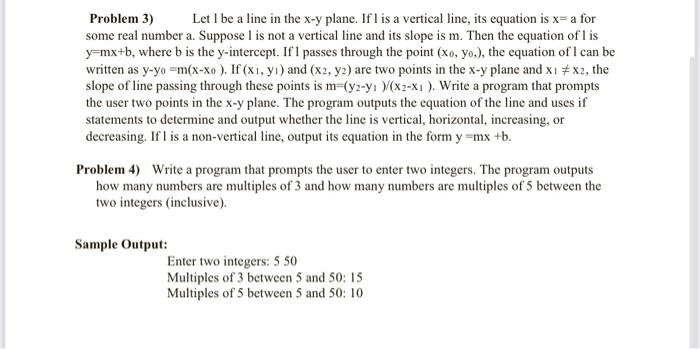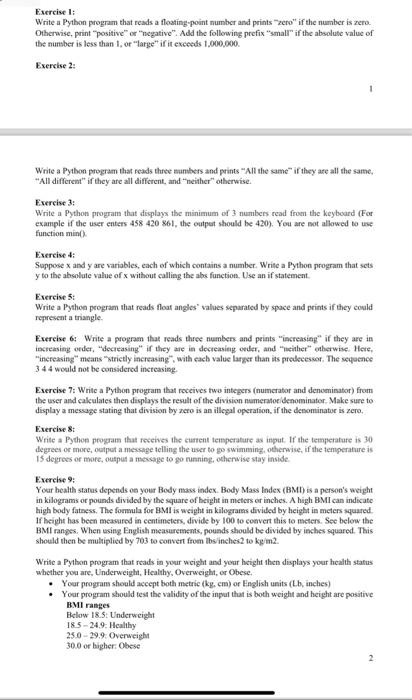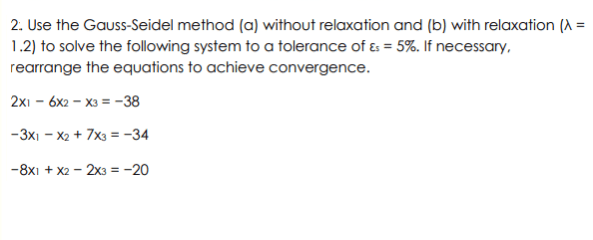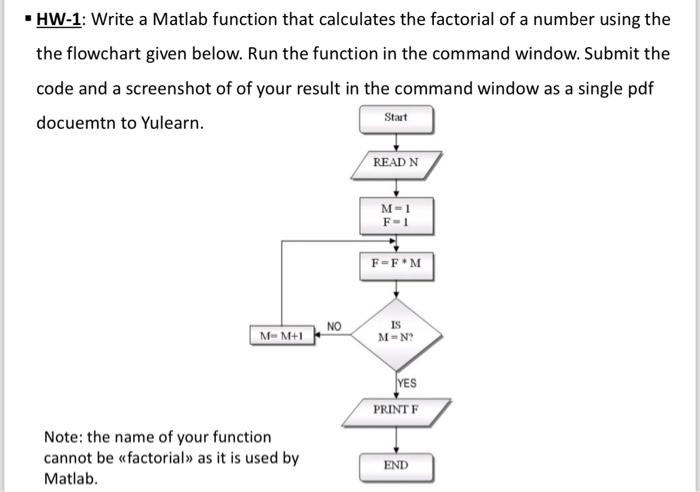(1) Write a function which takes a list of the coefficients of a polynomial P(x) = a0 + a1x + a2x^2 + … + anx^n of arbitrary degree n, and a value of x0, and returns P(x0). You can use the function given in lectures, ensuring you understand how it works.
(2) Use the function to evaluate (a) P1(x) = 4x^4 + 3x^2 + 2 at x = 2. (b) P2(x) = 241x^4 at x = 2. Are these answers exact? Explain why or why not. (Use a print statement to show the evaluation of your function, and answer the question in a comment.)
(3) The power series for the sine function sin(x) is given by sin(x) = Σ (1)^n * (2n+1)! * x^(2n+1) = x – x^3/3! + x^5/5! – x^7/7! + …, for all x. Use the first four terms in this series in the Horner evaluation function at a suitable value of x to give an approximation of sin(π/4).
(4) (a) Use your Horner’s method function to evaluate the polynomial (x-1)^3 at the point x = 1.000001. (b) Is this answer correct? (c) Briefly explain why or why not.
(5) In week 3 we wrote a function to convert from binary to decimal. This can be adapted to other bases; here we will explore octal (base 8). The efficiency of the function we wrote can be improved using the same principle as Horner’s method. Write such a function (horner_octal_to_dec) using the ideas of Horner’s method which takes a list whose entries are integers between 0 and 7, where the list represents a base-8 number, and returns the corresponding decimal integer (so the input [2,5,1] returns the integer 169).

 25% off with code “SUMMER”
25% off with code “SUMMER”
![(1) Write a function which takes a list of the coefficients of a polynomial P(x) = a0 + a1x + a2x^2 + ... + anx^n of arbitrary degree n, and a value of x0, and returns P(x0). You can use the function given in lectures, ensuring you understand how it works. (2) Use the function to evaluate (a) P1(x) = 4x^4 + 3x^2 + 2 at x = 2. (b) P2(x) = 241x^4 at x = 2. Are these answers exact? Explain why or why not. (Use a print statement to show the evaluation of your function, and answer the question in a comment.) (3) The power series for the sine function sin(x) is given by sin(x) = Σ (1)^n * (2n+1)! * x^(2n+1) = x - x^3/3! + x^5/5! - x^7/7! + ..., for all x. Use the first four terms in this series in the Horner evaluation function at a suitable value of x to give an approximation of sin(π/4). (4) (a) Use your Horner's method function to evaluate the polynomial (x-1)^3 at the point x = 1.000001. (b) Is this answer correct? (c) Briefly explain why or why not. (5) In week 3 we wrote a function to convert from binary to decimal. This can be adapted to other bases; here we will explore octal (base 8). The efficiency of the function we wrote can be improved using the same principle as Horner's method. Write such a function (horner_octal_to_dec) using the ideas of Horner's method which takes a list whose entries are integers between 0 and 7, where the list represents a base-8 number, and returns the corresponding decimal integer (so the input [2,5,1] returns the integer 169).](https://gotit-pro.com/wp-content/uploads/2023/10/627bbfd5-a1bb-4d60-954c-b70c3537706b.jpg)







![Test Your Antarctica Water Segmentation Function Create a function to segment the Antarctica ice shelf images using the Color Thresholder app as described in the previous reading. You can use this function to calculate the increase in visible water between the two images. Copy the code from your generated function into the first code box below. We've provided a function name for you below, segmentMeltwater. Copy the code from inside your function (do not copy the first line or the last end, just the code inside) and paste into the first code box below. Use the Run Function button to make sure you've copied the code over correctly and it works before submitting. Use the feedback to help you determine how to adjust your thresholds. Function: ``` function [BW, maskedRGBImage] = segmentMeltwater(RGB) % copy the code inside your function here end ```](https://gotit-pro.com/wp-content/uploads/2023/10/16891987-0fcf-4a3f-9352-c1af3a659f17.png)


Noman Anwar –
Excellent job, my friend. Thank You!!
Teresa Morris –
Awesome work as usual!!
David Leedberg –
Thank for your help and service. I really like the work that they did on my paper.
Tad Summerfield –
Tutor is patient, highly efficient and well spoken. I can always count on early delivery! Thx!!
Amanda Shavers –
Great Work In Timely Fashion. Something what I wanted.
John Chaple –
Work was finished long before due and tutor was considerate and engaging. Perfect!